Observing the Sun for Yourself

 Don't ever look directly at
the Sun through a telescope or in any other way, unless you have the proper filters.
Don't ever look directly at
the Sun through a telescope or in any other way, unless you have the proper filters.
Can one damage their eyes by looking directly at the Sun?
There are many ways you can observe the Sun, and hopefully sunspots,
for yourself. The easiest and safest is to project the Sun by building
your own pinhole camera. Or, if you have your own telescope, you will
need to obtain a solar filter. There are even solar telescopes online,
which you can access via the web to observe the Sun.
Projecting the Sun
Pinhole Camera
You can easily, cheaply, and safely observe the Sun by projecting it through a tiny
hole onto a white sheet of paper. This simple device is called a "pinhole camera".
You'll need:
- 2 sheets of stiff white paper
- A pin
- A sunny day
- Perhaps a friend to help
With the pin, punch a hole in the center of one of your pieces
of paper. Go outside, hold the paper up and aim the hole at the Sun.
(Don't look at the Sun either through the hole or in any other way! )
Now, find the image of the Sun which comes through the hole.
Move your other piece of paper back and forth until the image looks best.
What you are seeing is not just a dot of light coming through the hole,
but an actual image of the Sun!
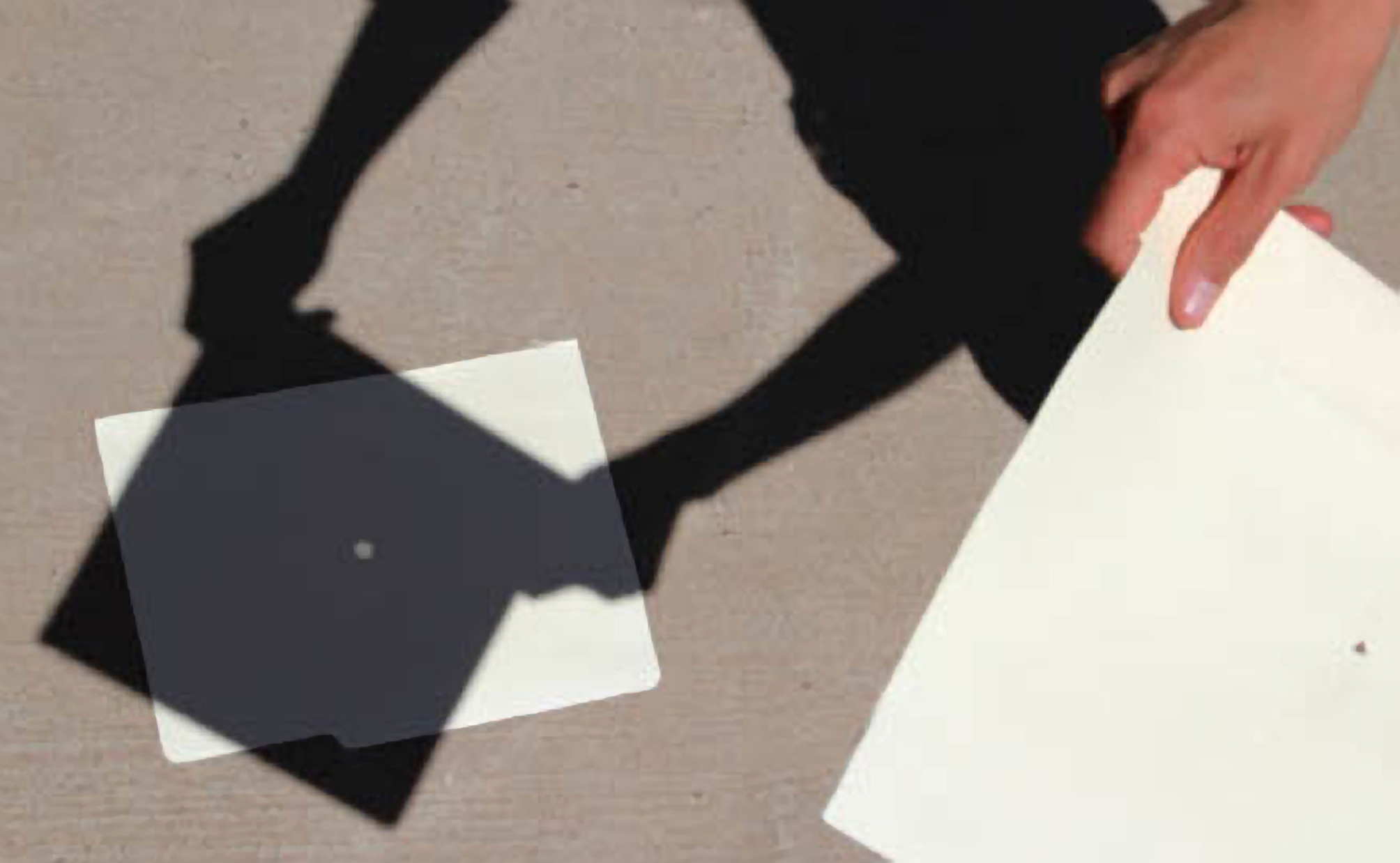
Experiment by making your holes larger or smaller. What happens
to the image?
What do you think would happen if you punched a thousand holes in
your paper, and you put little lenses in front of each hole to
refract (e.g. bend) the solar images to all fall on top of each
other. What do you think you'd see?
In fact, optical telescopes can be
thought of as a collection of millions of "pinhole" images all
focused together in one place!
If you want, you can make your pinhole camera fancier by adding devices to hold up your piece of
paper, or a screen to project your Sun image onto, or you can even adapt your pinhole camera into a
"real" camera by adding film. Google "pinhole camera" for lots of ideas!
You can also project an image of the Sun using a pair of binoculars
or a small telescope:
 Make a Safe Sun Projector with Binoculars
Make a Safe Sun Projector with Binoculars
 How to Look at the Sun Safely
How to Look at the Sun Safely
 Observing the Sun for Yourself (a
classroom activity)
Observing the Sun for Yourself (a
classroom activity)
If you want to learn more about how light works,
you can join artist Bob Miller's web-based "Light Walk" at the Exploratorium.
It's always an eye-opening experience for students and
teachers alike. His unique discoveries will change the way you look
at light, shadow, and images!
 Bob Miller's Light Walk
Bob Miller's Light Walk
Projecting the Sun by Sun Funnel
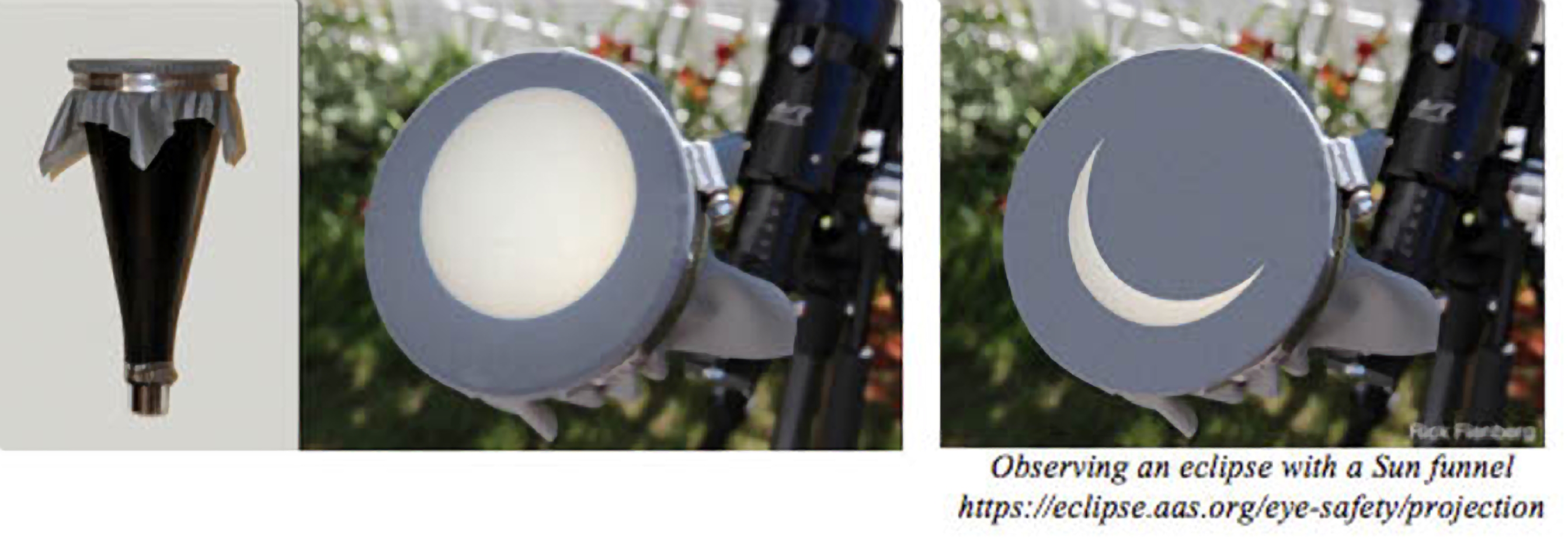
There is an easy-to-make cone device you can attach to a telescope so that
multipole people can easily view your projection. Really awesome, and
your friends will love it! Instructions at
Make a Sun Funnel
Using the little Sunspotter Telescope
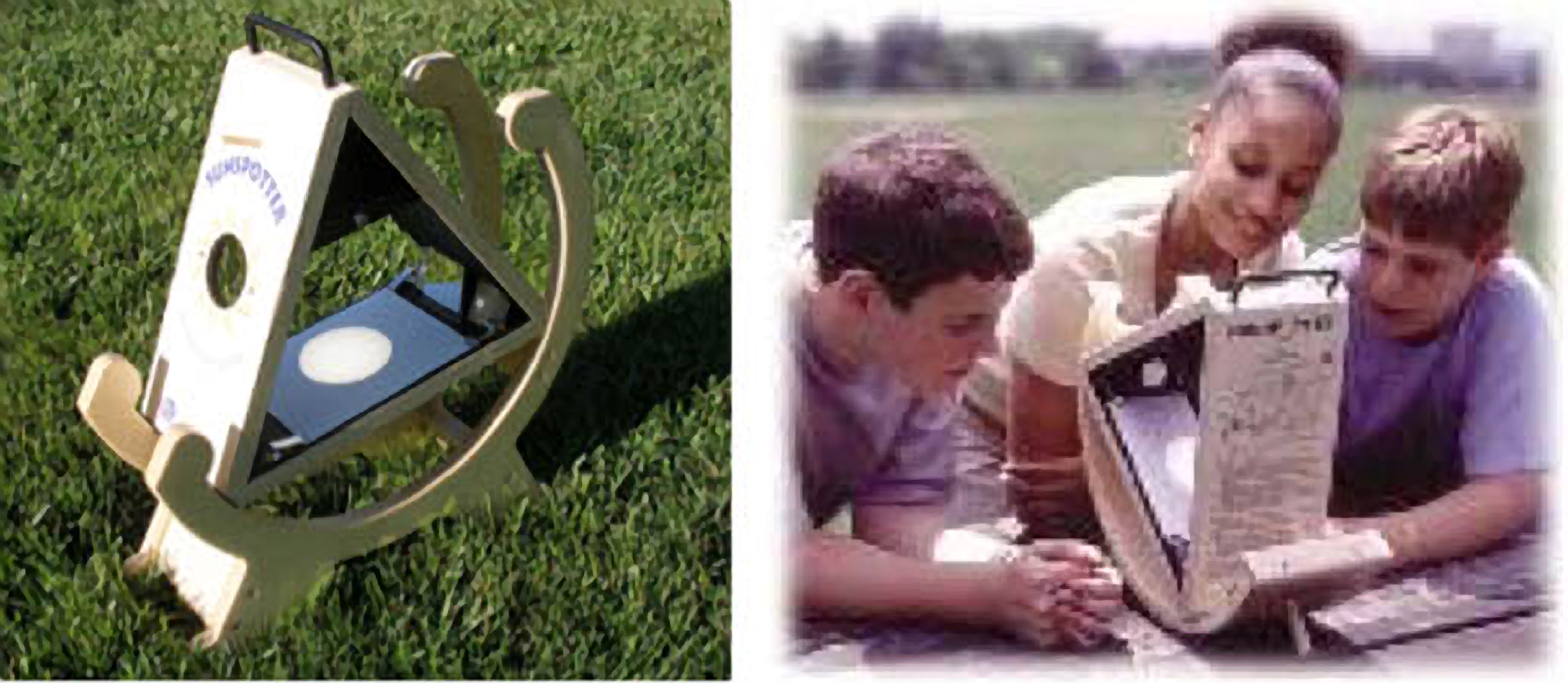
A safe and inexpensive solar telescope of your own! Thanks to the efforts of
Learning Technologies, Inc., who brought you the Starlab portable planetariums
and the Project Star kits, schools can now own
solar telescope of their own.
This wooden, folded-path, Keplerian telescope provides a much safer and
convenient way to view the brilliant light of the Sun than other more
common methods. By using a series of mirrors, the device projects a
bright 3.25-inch solar image onto a 5-inch white viewing screen through
a powerful 62mm diameter objective lens. In its perfectly curved cradle,
the Sunspotter is easily aligned to the Sun in seconds, without the
complication of telescopes, solar filters, and tripods.
The Sunspotters run approximately $430-$500. They are available on the web.
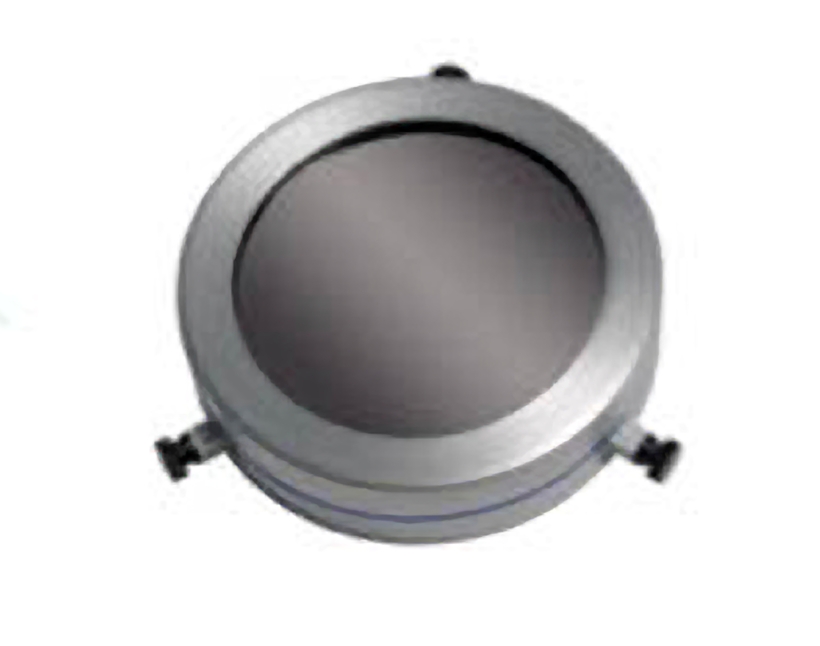 Using Your Own Telescope
Using Your Own Telescope
The safest way to look at the Sun through your own telescope is NOT to!
Not only could you damage your eye, but you can also damage the
lenses in the telescope.
The safest practical way to see the Sun through a night-time telescope
is to use a solar filter. Baader filters are the best, but others
are avilable as well.
Check out
How to Choose a Solar Filter
There is a particular color of red (called H-alpha, coming from hydrogen atoms) that is good for
viewing the Sun's chromosphere, the part of the Sun directly above the surface, and that shows the
best solar activity. You can purchase a Coronado PST (Personal Solar Telescope) to observe in
H-alpha! These show prominences, filaments, sunspots, plages (white areas around sunspots).
You can learn more these at:
Observer's Guide to the H-alpha Sun.
The PSTs run about $550, and are available on the web. Plus you'll need to add a tripod.
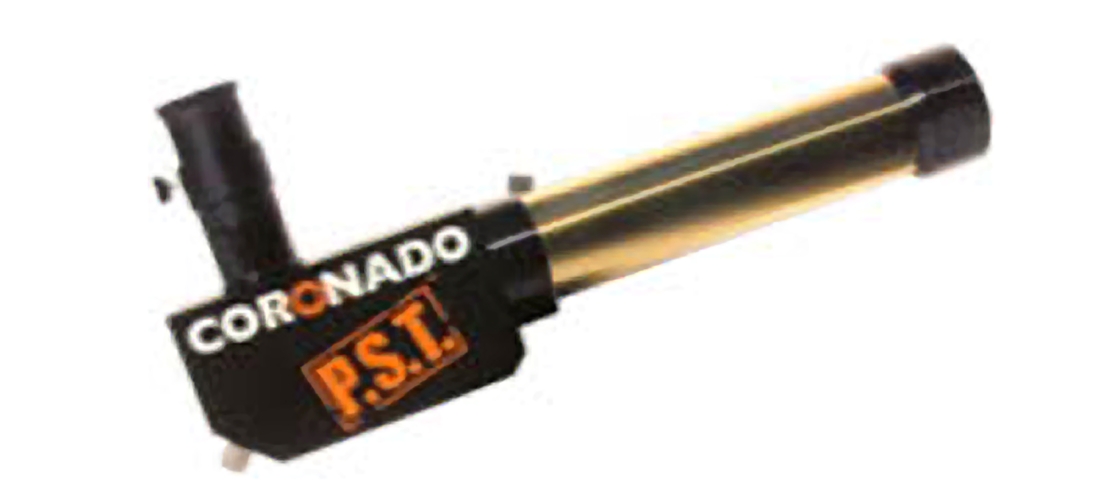
Or, you could purchase an H-alpha filter for your own telescope. This site will help educate
your on the basics of front and rear mounted filters:
Hydrogen-Alpha Solar Filters
View the Sun through NASA's Solar Dynamics Observatory
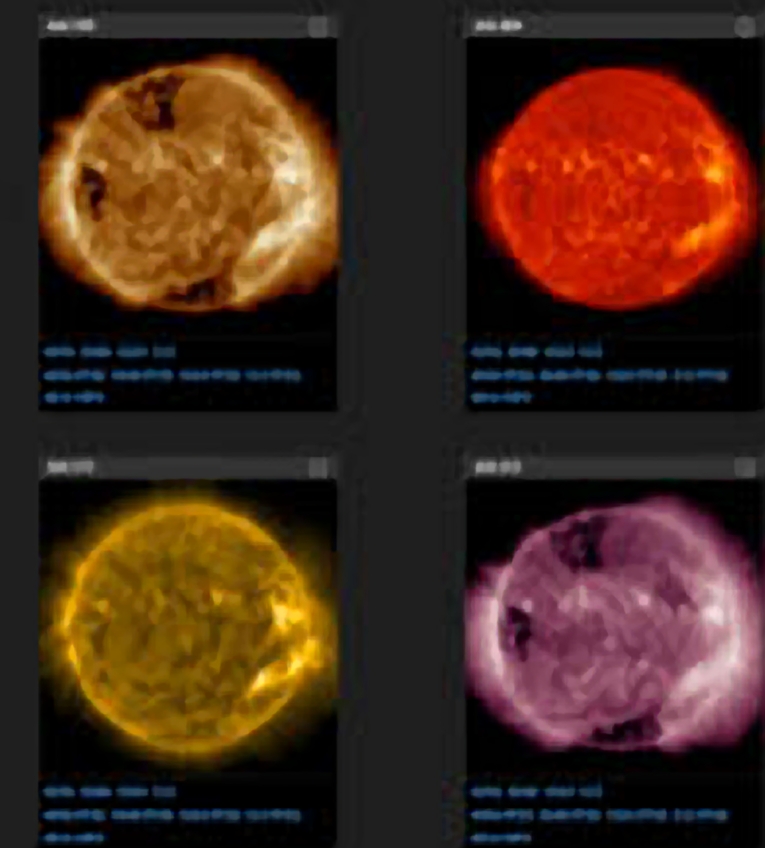
If you can't afford your own NASA solar telescope, you can at least view
the glorious imagery that NASA's Solar Dynamics Observatory (SDO) produces:
SDO Data
There is even a special tool that allows you to access this imagery
and generate our own videos:
JHelioviewer
If you would REALLY like to get into JHelioviewer, or you end up having to teach a community
college course in astronomy, you can learn how to use this tool for yourself
or for student laboratories:
SDO Data in the Classroom
Eclipse Glasses - for anytime!
For very little money you can purchase a pair of paper eclipse glasses.
They are great for both total and partial eclipses, and they work anywhere,
anytime you can see the Sun! Available on the web.
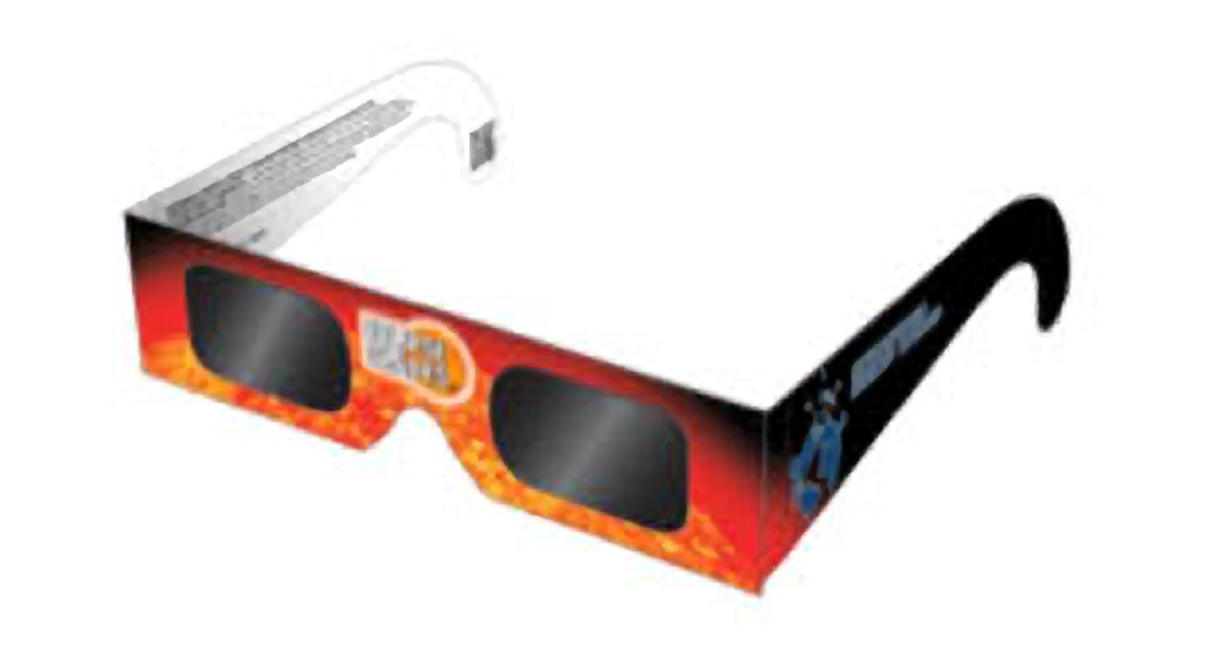
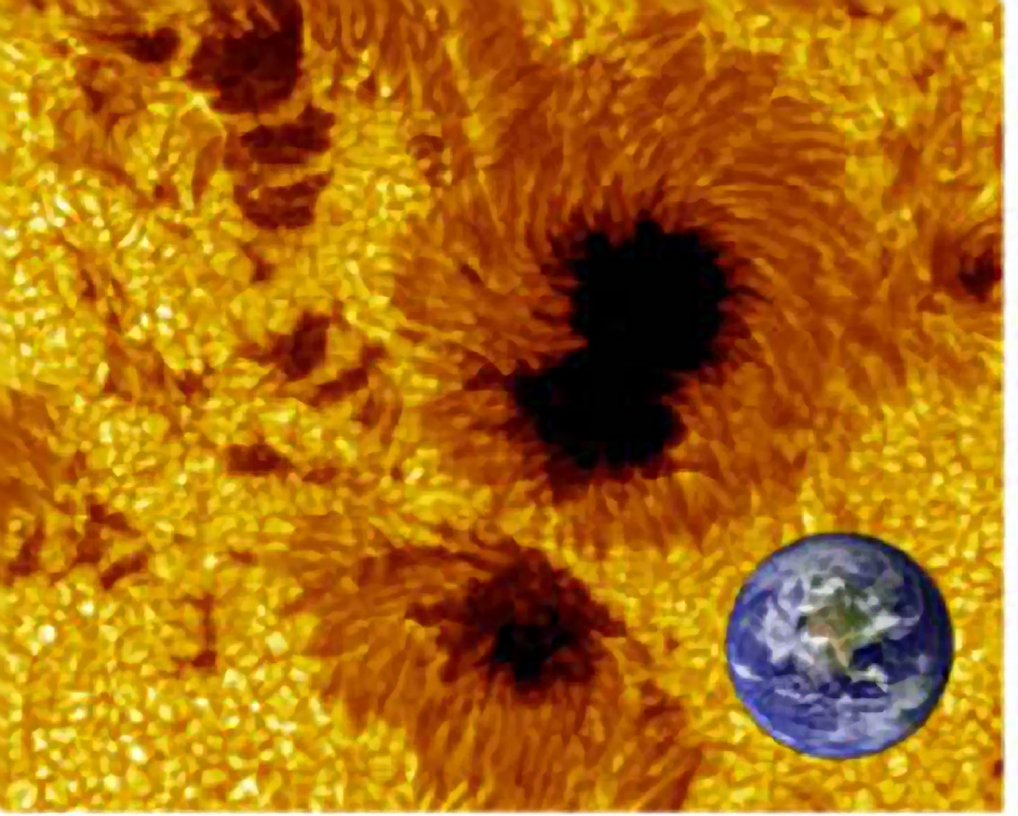 Observing and Drawing Sunspots
Observing and Drawing Sunspots
Do you know what a sunspot is? If not, check out
Sunspots
And, did you say you liked to draw? Before the advent of exotic cameras and other technological
wonders, astronomers had to rely on drawings or sketches to document what they had seen. Humans have
been sketching sunspots for hundreds of years, see
Mt Wilson Historical Sunspot Drawing Resource
Page.
Sunspot observations were first recorded in China during the Shang Dynasty (~1700 BC to ~1027 BC).
In the I Ching (an ancient Chinese divination text and the oldest of the Chinese classics, c. 800
BC), a very early observation of sunspots was recorded as "three suddenly bursting fires eating a
chunk of the sun" -- the first instance in recorded history of someone observing sunspots.
However, large sunspots are occasionally visible with the naked eye, so it is very likely humans
have been observing sunspots for thousands of years.
An English monk named John of Worcester made the first drawing of sunspots in December 1128. Later,
around 1611, Galileo's drawings touched off a huge controversy about whether the blotches were on
the Sun or small planets orbiting it. Historic drawings are still very important. And even today,
drawings are still most accurate at recording exactly what the eye sees, unaltered by the processing
of fancy electronics:
Galileo's
Sunspot Drawings
Do your own sunspot drawings: You can make your own sunspot drawings by oserving
sunspots using any of the above techniques. Then you can compare your sketches to those at Mt.
Wilson (in Pasadena, California), an observatory that has been collecting sunpot drawings
since 1917. This tradition still continues.
Daily Sunspot Drawings at Mt. Wilson
Ranking Sunspots - Zooniverse:
This is a citizen-science, Zooniverse project to rank the complexity of current sunspots.
You too can participate!
What is a sunspot?
Counting Sunspots:
In 1843 an amateur German astronomer named Samuel Schwabe discovered the rise and fall of yearly
sunspot counts. We now call this the sunspot cycle. Daily counts have been done since 1849, and
still continue. You can do your own, although counting sunspots is not as straightforward as it
sounds. You have to figure out how many spots there are, as well as how many groups. And it's hard
to determine what qualifies as a sunspot group! How to follow this procedure and count your sunspots
is explained at:
Sunspots - Count Them, Draw
Them, Rank Them
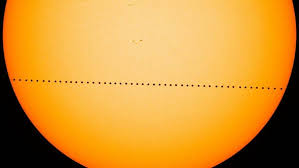 Observing Transits
Observing Transits
A transit is somewhat like an eclipse, only there is a large disparity between the sizes of the
objects. Occasionally the planets Mercury and Venus line up with our view of the Sun and appear to
transit across its disc. (Thought for the day: why can't you see other planets transit the Sun?)
You can view transits with any of the techniques above.
Mercury transited the Sun on 9 May 2016 and 11 November 2019, see above.
For viewing the next Mercury transits, see
name
The image below shows Venus transiting the Sun in June of 2012. The next occurrence will be in
December 2117. Encourage your grandchildren to witness it!
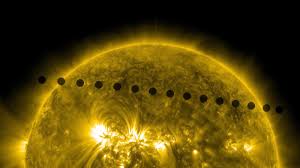
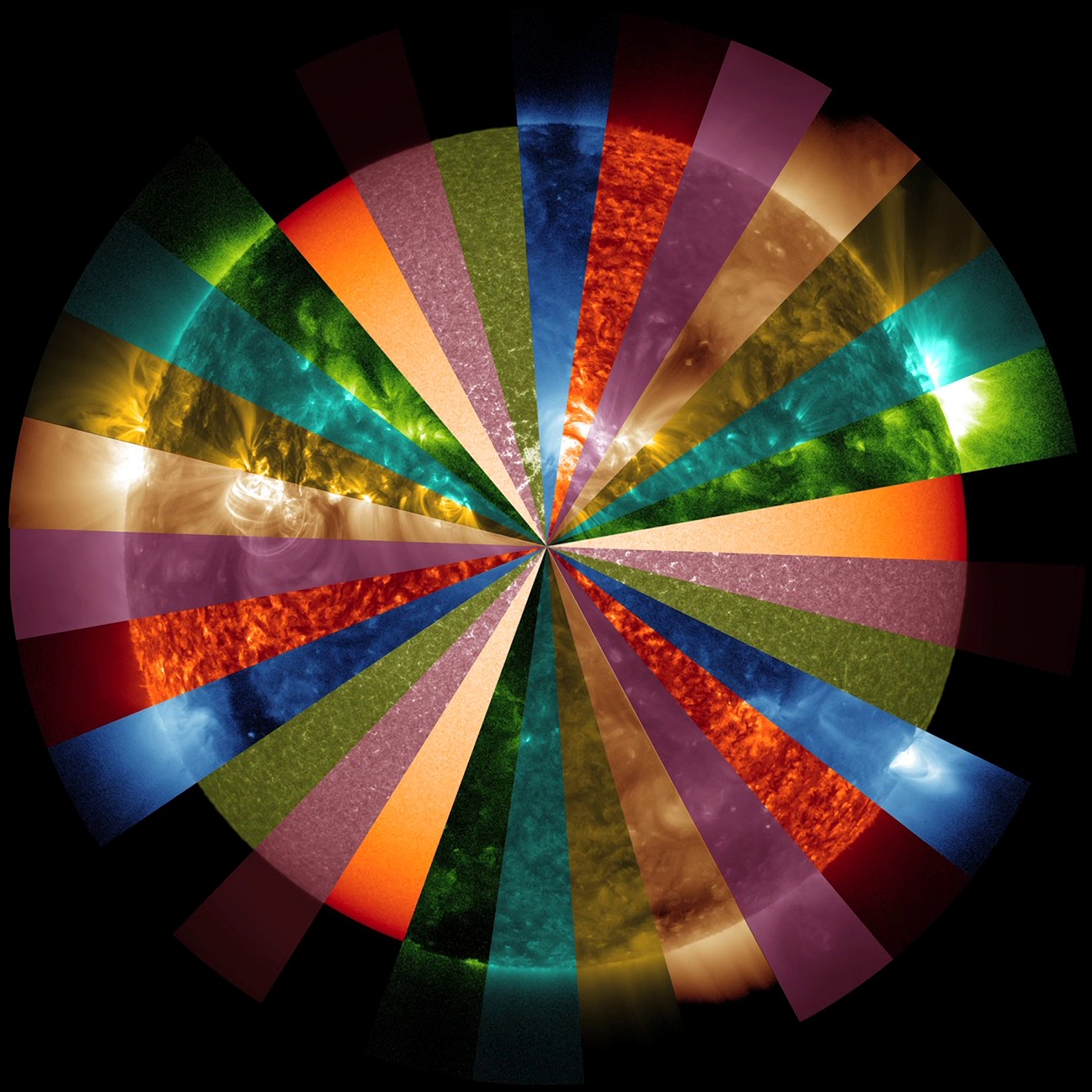 What Color is the Sun?
What Color is the Sun?
Having observed the Sun now, you might have a pretty good idea of what color it is. But you may be
wrong. Many images from solar telescopes artificially color the Sun to make details
more prominent (i.e. it's hard to see details when a white Sun is
placed on a white background). This is a similar problem to using crayons to color the Sun on
white paper. Hence many young artists choose yellow, orange, or red for the Sun. If you view
the Sun at sunrise or sunset, or through eclipse glasses or filtered telescopes, the Sun may appear
yellow, orange, or red. But the Sun is actually white!
To explore the various colors of the Sun, and find ways to determine what they are, see
What Color is the Sun?
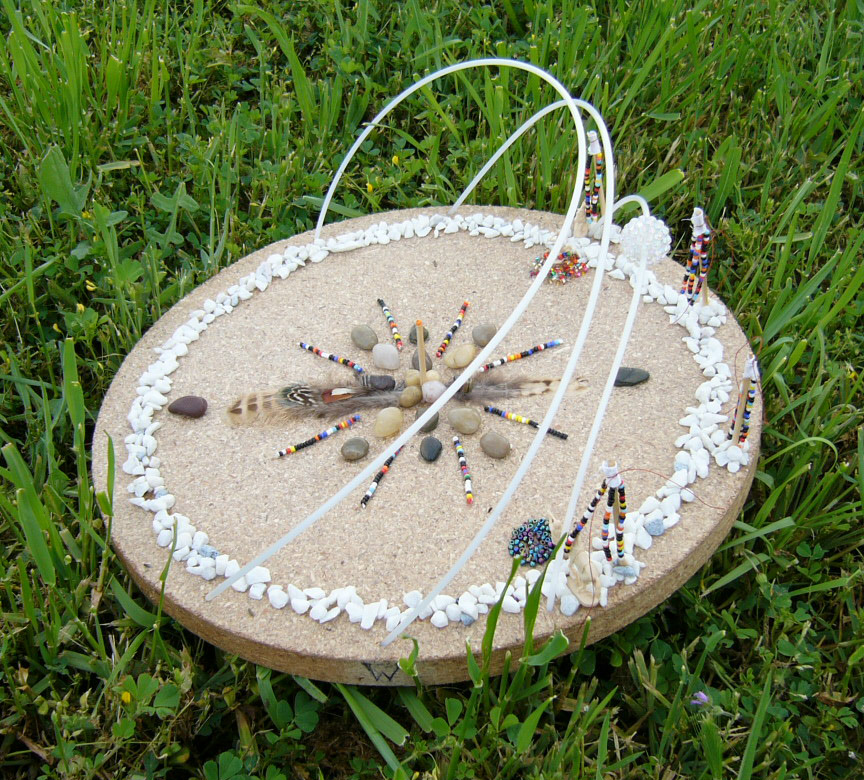 Where Does the Sun Rise and Set?
Where Does the Sun Rise and Set?
When asked, most people say the Sun "rises in the east" and "sets in the west".
However, this is only partially true. In fact, it is only true at two tmes during the year - the
equinoxes.
During the other times of the year, the sunrise and sunset positions make a track from north to
south, and back again.
If you would like to better understand how this works, see
Where Does the Sun Rise and Set?

